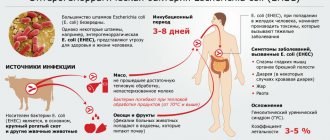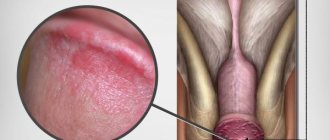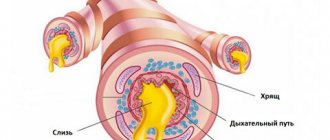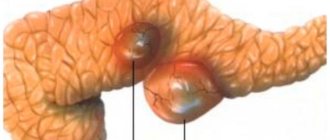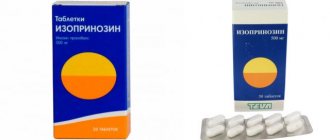Serous meningitis is a serous inflammation that affects the pia mater of the brain, accompanied by the formation of serous exudate, which includes some elements of blood cells and 2-2.5% protein.
Serous meningitis most often affects children aged 3–6 years
The disease can either be caused by infectious agents (fungi, viruses, bacteria) or be of an aseptic, non-infectious nature.
The inflammatory process in serous meningitis does not lead to cell necrosis and is not complicated by purulent melting of tissue. Therefore, this disease, unlike purulent meningitis, has a more favorable prognosis.
Serous inflammation of the meninges most often affects children aged 3–6 years. In adults, serous meningitis is diagnosed extremely rarely, in patients 20–30 years old.
What is serous meningitis
The disease is infectious in nature and occurs as a result of infection from a sick person, a healthy carrier of the infection, through food and water contaminated with the pathogen, or contaminated objects. In the case of tick-borne meningoencephalitis, the disease occurs after the bite of an infected tick.
Based on the nature of inflammation, there are 2 main types of meningitis:
- Purulent. The causative agents of the disease are meningococci, pneumococci, streptococci and other pathogenic bacteria. This form of meningitis is characterized by purulent inflammation with the formation of a large number of dead bacterial cells, leukocytes, and protein components. The most common type is meningococcal meningitis (causes epidemics). In severe cases, with massive purulent foci, not only the membranes are affected, but also the brain tissue, which causes serious disturbances in the functioning of the central nervous system.
- Serous meningitis. Other names for this form are aseptic, non-purulent (inflammation occurs without the formation of pus), viral (after the name of the main pathogens - enteroviruses ECHO and Coxsackie). The causative agent of the aseptic form is also Koch's tuberculosis bacillus. This form also includes tick-borne meningoencephalitis. It is believed that the causative agents of the serous form are mainly viruses.
A mixed form (serous-bacterial) also occurs. There are primary and secondary meningitis (develops against the background of an underlying disease, for example, an immunodeficiency state, viral infections). There are acute and chronic courses of the disease.
Helpful information
Serous meningitis, as a rule, is not as severe as purulent meningitis. It has a benign course and rarely causes complications. This form often affects children from 2 to 6 years old. Serous meningitis occurs quite rarely in adults.
The disease predominantly affects the lower part of the brain, where miliary tubercles are found that accumulate along the vessels. In this case, serous exudate is formed in the meninges as a result of inflammation. The inflammatory response leads to damage to nerve cells, which manifests itself as neurological symptoms, as well as vascular diseases.
Classification
There are tuberculous and directly viral forms of serous meningitis.
Tuberculous meningitis
It is of a secondary nature. The disease develops if there are tuberculosis foci in the body, from where the pathogen enters the brain through the bloodstream. More often, the base of the brain becomes infected, where small tuberculous nodules begin to appear. A grayish fluid (exudate) begins to accumulate between the membranes of the brain, which leads to swelling, compression of brain tissue and neurological symptoms.
Viral meningitis
Non-purulent (aseptic) inflammation of the meninges is caused by viruses:
- ECHO;
- Coxsackie;
- herpes;
- polio;
- tick-borne meningoencephalitis;
- lymphocytic choriomeningitis;
- mumps, etc.
With mumps, inflammation of the parotid salivary glands occurs, which greatly increase in size, due to which the oval of the face is noticeably rounded and the neck enlarges. Therefore, this disease is called “mumps”. In more than 10% of cases, the disease develops into serous meningitis with damage to the nervous system.
The lymphocytic choriomeningitis virus first colonizes the lymph nodes, from where it enters the general bloodstream and reaches the meninges.
Enteroviruses (ECHO, Coxsackie) are found in the gastrointestinal tract, then with weak immunity they affect the membranes of the brain. Therefore, nausea and diarrhea are common manifestations of serous meningitis caused by these pathogens. Coxsackievirus also causes a rash on the skin of the extremities. Mostly children under 10 years of age are affected.
It is recommended to know what enterovirus infections are, because this disease occurs quite often in children and can lead to the development of serous meningitis.
Preventive actions
Treatment of any form of meningitis does not begin at the time of discharge from the hospital. A whole range of preventive measures will be recommended, some of which will have to be observed and carried out for 4 years. Prevention will not hurt those who have been in contact with the patient.
The best prevention is considered to be a strong immune system, which can be easily maintained with a healthy diet and vitamin supplements. Adults need to give up alcohol and smoking, children and their parents need to ensure a healthy lifestyle. Vaccination against tuberculosis may be recommended. This procedure should not be ignored. This guarantees no relapse.
In addition, it is recommended:
- do not visit polluted water bodies;
- regularly do wet cleaning and ventilate the room;
- wash your hands after going outside and before eating;
- wash fruits and vegetables before eating;
- do not drink tap water;
- observe the rules of personal hygiene.
Principles of nutrition
Not only ready-made vitamin complexes, but also recommendations from alternative medicine will help strengthen the immune system. Children need to be taught from early childhood the dangers of eating unhealthy foods. Therefore, it is necessary to exclude carbonated sweet drinks, spicy, fried, fatty foods, reduce salt and sugar to a minimum, and avoid visiting fast foods. The menu of a person who has had meningitis should include:
- fresh vegetables and fruits;
- dairy products;
- hard cheeses;
- lean meats (boiled, steamed);
- sea fish and seafood;
- nuts;
- buckwheat, cheese;
- dried fruits.
Causes and routes of infection
The entry gates for pathogenic viruses are the mucous membranes of the nasopharynx and intestines.
Infection with enteroviruses (the causative agents of serous meningitis) occurs:
- by contact: through unwashed hands, biological fluids, contaminated household items;
- airborne;
- through contaminated unboiled drinking water and thermally untreated food;
- when swimming (open reservoirs, swimming pools).
In the case of tuberculosis - airborne droplets (especially in a crowd).
In tick-borne meningoencephalitis, the cause of the disease is most often the bite of an infected tick. The encephalitis virus can also enter the human body by crushing an infected tick or by consuming raw milk from infected goats and cows.
People become infected with lymphocytic choriomeningitis from rodents (including domestic guinea pigs and hamsters) and dogs.
When the immune defense is weak, viruses multiply massively inside the body. They penetrate the membranes of the brain through the bloodstream, bypassing the blood-brain barrier, which ultimately leads to the development of meningitis.
Incubation period
Enteroviruses do not immediately begin their active activity after entering the body. They need time to adapt and reproduce. And the duration of this incubation period is different in each case, and it depends on the type of pathogen.
The average incubation period is four to ten days.
And then the presence of enteroviruses in the body makes itself felt. Moreover, their manifestation begins unexpectedly and has a pronounced symptomatic picture. Serous meningitis develops very quickly and in an acute form.
Symptoms
The characteristic symptoms of serous meningitis are fever and severe headache.
Involvement of the brain itself in the pathological process is accompanied by neurological symptoms of meningoencephalitis.
In children
Symptoms of serous meningitis in children (similar to symptoms of influenza):
- fever, increase in temperature to 38–40°C (in the case of tuberculosis - subfebrile temperature);
- headache (increases as the disease progresses);
- rhinitis (runny nose);
- anxiety, sleep disorder;
- general malaise;
- lack of appetite;
- photophobia (photophobia);
- bulging fontanel in infants;
- indigestion, nausea, diarrhea;
- skin (hemorrhagic) rash;
- nuchal rigidity (hypertonicity, severe tension in the neck muscles).
Babies may experience seizures. With a severe headache, vomiting occurs that is not associated with food intake. Serous meningitis in older children can manifest itself with neurological symptoms: speech disorder, confusion.
In adults
Clinical manifestations of serous meningitis in adults:
- mild fever;
- nausea, possible vomiting, sometimes abdominal pain;
- headache (bursting), mainly in the frontal part;
- nuchal rigidity;
- when infected through airborne droplets, there may be a cough accompanied by a sore throat and runny nose;
- possible psychomotor agitation, delirium, hallucinations, which are replaced by lethargy and lethargy;
- intolerance to loud noise and too bright light (increase headaches);
- increased skin sensitivity to external irritants;
- anorexia, sweating, severe fatigue (with the tuberculous form of serous meningitis).
The disease is accompanied by severe intoxication, intracranial hypertension is detected (increased intracranial pressure due to a strong accumulation of serous exudate). The fever lasts for about a week. Manifestations of impaired consciousness depend on the degree of brain damage.
Short description
Damage to the membranes of the spinal cord and brain, provoked by bacteria, viruses, fungi, is defined by official medicine as serous meningitis. Children of preschool age are mainly at risk. This is exactly the period when the baby begins to attend kindergarten, where there may be potential carriers of the virus. In schoolchildren and adults, this pathology is detected quite rarely.
The disease is characterized by symptoms that accompany meningitis of other etiologies. These are high (above 38) temperature, headache, nausea and vomiting. Such symptoms make timely diagnosis difficult, since parents often confuse the condition with colds. But the consequences are unfavorable, so the manifestation of any signs should force you to seek medical help.
Diagnostics
The main method for diagnosing serous meningitis is lumbar puncture (cerebrospinal fluid diagnosis). It allows you to differentiate the type of disease: to distinguish the serous form from the more serious purulent form. During the procedure, cerebrospinal fluid is taken from the spinal canal, in which inflammatory changes are detected.
In case of viral infection and tuberculosis, the cerebrospinal fluid is transparent and flows out in a stream under pressure. The puncture procedure brings significant relief to the patient and improved well-being.
The amount of glucose in the cerebrospinal fluid in the tuberculosis form is significantly reduced, which is a hallmark of this type of disease.
Lumbar puncture helps differentiate serous meningitis from influenza.
Diagnostics:
- blood analysis;
- MRI, CT scan of the brain;
- nasopharyngeal swab examination;
- pathogen detection (PCR).
Helpful information
Tick-borne meningoencephalitis is diagnosed by detecting attached ticks or bite marks, and has a pronounced spring-autumn seasonality. These blood-sucking insects are especially active in early spring.
A diagnostic sign of intracranial hypertension in serous meningitis in infants is a noticeable protrusion of the fontanel.
Transmission routes
Meningitis develops after the pathogen enters the body and further into the cerebral cortex. Infection can occur in several ways. Depending on how the infection occurred, the speed of development of the disease will depend.
Methods of penetration of a virus, bacteria or fungus:
| Main routes of infection | How does infection occur? | Notes |
| Contact | The infection enters the body through communication with a carrier, through a handshake, kisses | With this infection, the disease can develop within the first 3 days |
| Domestic | The pathogen settles on surrounding objects and products when the patient sneezes. From them it already enters the body of a healthy child | By following hygiene measures, infection can be avoided. If they were absent, then the disease will manifest itself no later than in 10-14 days |
| Air | When you sneeze or cough, the virus can enter your respiratory tract directly. | Symptoms may appear within 2 weeks |
| Water | The infection can be found in the pool and, when water is ingested, colonizes the body | The disease can make itself felt within 3 days |
| Infection | In case of a viral, fungal or bacterial disease, the pathogen can enter the brain through the blood vessels, along with the blood, which will serve as the onset of the disease | Depending on the severity of the primary disease (which caused meningitis), the rate of development of the inflammatory process in the brain depends. |
| Animals and insects | The infection can be transferred from an object to food or another object on the legs of insects, or it can get in with the fur of the animal. Pets are also susceptible to the disease and can be sources of infection. Also, blood-sucking mosquitoes (mosquitoes and ticks) can be carriers and infect through bites. | If infected through a bite, the first symptoms of meningitis will appear within 6 hours from the moment of infection |
| Through the blood | If instruments are not properly disinfected in a hospital or blood testing is poor, the pathogen can be introduced through blood transfusions, dental treatment, or when taking tests from a vein. And also when the virus gets into open wounds due to scratches or abrasions. | The infection quickly reaches the site of localization, and the first symptoms appear within the first day. |
This disease is quite difficult to avoid. Because a sick person may be contagious from the moment of infection, but may not show symptoms for 14 days. All this time he will be a spreader of the disease. But maintaining hygiene measures (clean hands and fruits) reduces the risk of infection.
Treatment of serous meningitis
Drug therapy depends on the type of pathogen.
For tuberculosis form the following is prescribed:
- Isoniazid;
- Streptomycin;
- Ethambutol;
- Rifampicin.
Accepted as a whole. The combination of these potent anti-tuberculosis drugs can have a bad effect on the condition of the liver, so a plant-based hepatoprotector based on milk thistle, Karsil, is added to the medicinal complex. In the early stages, corticosteroids are indicated as anti-inflammatory therapy. Isoniazid is taken for several months. The total duration of anti-tuberculosis therapy for serous meningitis can be 1.5 years.
For the viral form, symptomatic therapy is used (pain relief, fever reduction, diuretics to prevent cerebral edema). Sometimes it is advisable to use Interferon to maintain immunity and corticosteroids against inflammation.
It should be borne in mind that treatment of serous meningitis is prescribed only after an accurate diagnosis and identification of the causative agent.
Drug therapy
Treatment of serous meningitis is carried out in a hospital setting. Very rarely, with a mild infection, the sick person can stay at home. The sooner drug treatment begins, the greater the chance of a speedy and complete recovery.
Vaccination against meningitis
Meningitis is an inflammatory process in the lining of the brain, which often leads to death.
Drug prescriptions depend on the following factors:
- severity of the pathological process;
- identification ;
- general condition.
The drugs of choice include:
- detoxification agents;
- painkillers ;
- antiemetics;
- antipyretics;
- diuretics ;
- antihistamines ;
- performing a spinal puncture for therapeutic purposes.
After complete recovery, a specific rehabilitation course is prescribed, which includes:
- exercise therapy;
- myostimulation;
- psychological rehabilitation.
With timely treatment, the prognosis for complete recovery is very favorable.
Possible complications and consequences
To prevent complications, it is recommended to seek professional medical help as soon as the child begins to feel unwell due to fever and gastrointestinal disorders. Especially if you find a rash. The combination of fever, cough, runny nose and diarrhea indicates that this is not a common cold, but rather an enterovirus infection that can lead to the development of serous meningitis.
With a severely weakened body and a protracted course of the disease, the following complications are possible:
- Hydrocephalus (dropsy) is an excessive accumulation of cerebrospinal fluid in the ventricles of the brain. In infants, the head may noticeably increase in volume with a strongly bulging fontanel. In this case, normal formation of the skull does not occur. In adults, the size of the head does not change due to the fused bones of the skull. Excess cerebrospinal fluid is removed from the ventricles of the brain using a special shunt.
- Progressive deafness due to viral parotitis complicated by meningitis.
- Epilepsy (with untreated tuberculous meningitis).
- Cerebral infarction from damage to cerebral (brain) vessels by viruses.
- Deterioration of memory and mental abilities.
In children, complicated serous meningitis leads to learning problems and mental retardation. In adults, the likelihood of complications is significantly lower than in children.
The prognosis is usually favorable, recovery from viral meningitis occurs within a week, but headaches may still persist for 1–2 weeks. Tuberculous meningitis with effective therapy also recedes without serious consequences, although treatment lasts many months.
Disease statistics
SM is most often found in children of both sexes aged 3 to 6 years (66-78%). The most common cause (68%) is enteroviruses, which is considered more favorable for patients, because The disease ultimately progresses in a moderate form.
| Age | Share, % |
| Children under 5 years old | 16 |
| 5-10 years | 39 |
| 10-14 years | 45 |
| Total: | 100 |
Prevalence of SM among children under 14 years of age
If SM was caused by the mumps virus, herpes or Yersinia (32%), then very often the pathology occurs in a more severe form and with more negative consequences for patients.
Serous meningitis is a non-purulent inflammation of the meninges, most often caused by infection with viruses.
Manifested by high fever with neck stiffness, nausea, vomiting and other symptoms.
The diagnosis is made based on examination. The earlier treatment is started, the less chance of complications developing.
Among those patients examined by doctors, it was found that 45% were children aged 10-14 years, 39% - from 5 to 10 years. Another 16% are children under 5 years old. Two thirds of young patients with SM were boys (68%), the remaining 32% were girls.
Prevention
Prevention against meningitis is vaccination - the tuberculosis vaccine is given in the maternity hospital on days 3–5. Children are also given a trivaccine (against mumps, rubella, measles), a vaccine against smallpox, and influenza. Such measures also provide protection against potential viral meningitis as a complication.
General preventive measures to prevent infection with serous meningitis:
- If a patient has a cough or runny nose, protective bandages should be used when in contact with him.
- It is necessary to wash your hands, as well as vegetables and fruits.
- Do not drink raw water.
- Supervise young children to ensure they do not put dirty objects in their mouth.
- When ticks are active, you need to use special repellents.
Maintaining and strengthening the immune defense with proper nutrition and hardening the body is of great preventive importance.
Rehabilitation
Until the child shows positive progress in recovery, treatment will take place in a hospital. After stabilization of the condition, the pediatrician may allow further treatment at home. In this case, it is necessary to strictly follow all prescriptions and take medications on an hourly basis.
After recovery, the child will be under the supervision of a neurologist for up to 2 years.
If there were complications in other organs, then monitoring by other specialists (gastroenterologist, cardiologist) is necessary. During this period, it is necessary to take immunostimulating drugs and adhere to a diet. Heavy physical activity and prolonged exposure to direct sunlight are also prohibited. If all measures are followed, complete recovery is recorded after 2 years.
Main signs and symptoms in children
Newborns and infants may show the following signs and symptoms of the disease:
- heat;
- constant crying;
- excessive sleepiness or irritability;
- inactivity or slowness;
- poor appetite;
- a bulge in a soft spot on the child’s head (fontanelle);
- stiffness of the child's body and neck.
Infants with this pathology cannot lie or sit still. They begin to cry more forcefully if they are held in one position intentionally.
www.mayoclinic.org

